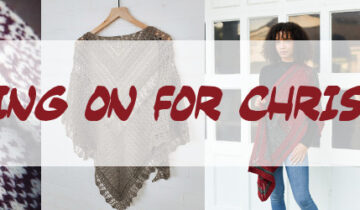Kate and I have been knitting lots of bobbles lately. Really a lot. Kate finished her last cardi, Ronn by Karin Weststrand while I am half way through the Viaduct shawl by Beata Jezek. Bobbles – also known as Estonian nupp – are often found in lace patterns and there are several possible ways to knit them. Here is a review of four of these methods.
The first technique might be the most commonly used and was the one recommended in both of our patterns.
1. Knit one without sliding the stitch off the left needle.
2. Yarn Over.
3. Insert the right needles into the stitch once more and repeat step one. Every time you add an extra stitch onto your right needle.
4. Yarn Over. Keep knitting and YO back and forth over the same stitch until you have the right amount of stitches on the right needles. This will be specified in your pattern. EX: Nupp 5, Nupp 7, etc.
5. Finally slip the stitch off the left needle and keep knitting in pattern until the end of your row.
6. On next WS row, purl through all the stitches created for your bobble together.
It is essential that the stitches are loose enough. You might find difficult to purl them together on the following row otherwise. Be aware that if you’re knit them too loose, your nupp won’t hold itself properly, so finding the right tension is key. Make sure that all the stitches sit nicely next to each other on the needle. Avoid any cross-over. This will allow the nupp to look as neat as possible.
For the second method, repeat steps 1 to 4.
5. Slip the stitch off the left needle. Then slip back all the stitches from the right to the left needle.
6. Knit them all together.
7. Keep knitting in pattern.
By knitting all the stitches together within the same RS row, you add up an extra stitch just over the bobble. This allow your nupp to pop out more – due to the bit of length given by the extra stitch – without messing with the row count.
For the third technique, repeat steps 1 to 4 once again.
5. Slip the stitch off the left needle. Then slip back all the stitches from your right to your left needle without letting them go from both needles. The left needle should be front of the right one.
6. Keep the stitches on both needles and slip your right needle underneath the left one. The right needle is now at the front.
7. Turn your work around, facing the WS of your project.
8. Purl all the stitches together.
9. Turn your work again. You’re now facing the RS, the bobble is on the left needle.
10. Slip it to the right needle and keep knitting in patterns.
Like with the second technique, a little bit of length is added by the extra stitch. The resulting nupp stands out nicely from the rest of the knitted fabric.
For the last method, repeat steps 1-4 using a crochet hook instead of your right needle. The hook must be of the same size that your needle.
5. Slip the stitch from the left needle.
6. Wrap the yarn over the hook once more, and use the hook to pull the yarn through all the stitches created for the nupp.
7. Slip the bobble from the hook to the right needle.
8. Keep knitting in pattern.
This method works well for those used to handle a hook but someone who never crochet before might find it a bit more difficult to manage. 

Maybe you’ve got some tips to share with us about bobbles? If so do not hesitate to leave a comment bellow!
Until Next Time… Happy Knitting!




 No products in the basket.
No products in the basket.
Knitting a nupp was not an easy thing for us…i was looking for an easy guide to knit nupps.. Founded your article much helpful… Surely will follow you